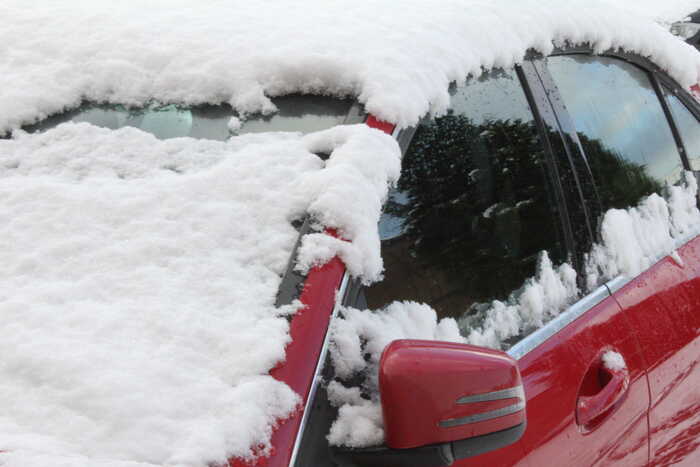Frozen door locks can be a frustrating and stressful experience, especially when you are in a hurry to leave your home or get back inside. When the temperature drops and moisture accumulates, the lock mechanism can freeze, making it impossible to turn the key and open the door.
The problem is more common in regions that experience harsh winter weather but can also occur during sudden temperature changes or exposure to high humidity levels. When you need a locksmith in Atlanta for frozen locks, call QuickPro Locksmith.
Causes of Frozen Locks
Frozen locks result from the lock mechanism being exposed to cold temperatures, moisture, or a combination of both.
Some of the leading causes of frozen locks include:
Cold Weather: Extremely low temperatures can cause the lock mechanism to freeze, making it difficult or impossible to turn the key. This is because the metal components of the lock can contract and become stiff, making it challenging to turn the key.
Moisture: Moisture can accumulate in the lock mechanism and freeze, causing it to become stuck. This can be caused by exposure to rain, snow, or humidity levels that are high enough to condense inside the lock mechanism.
Ice Build-Up: When water accumulates in the lock mechanism, it can freeze and cause the lock to become stuck. This is particularly problematic in areas where the temperature drops quickly, leaving no time for the water to evaporate before it freezes.
Tools and Materials Needed
You will need a few tools and materials to open a frozen door lock. The specific items you will need will depend on the method you choose to use.
However, some of the most commonly used tools and materials include:
Lighter or Matches: A lighter or a box of matches can warm up the lock mechanism and melt the ice that may be blocking the key from turning.
Hair Dryer: A hairdryer can blow warm air onto the lock mechanism, which can help melt the ice and warm up the metal components, making it easier to turn the key.
De-Icer Spray: De-icer sprays contain chemicals designed to melt ice and can be used to thaw a frozen lock. These sprays can be found in hardware stores and are safe to use on locks.
Warm Water: Warmer water can be used to thaw the lock mechanism, but be careful not to use water that is too hot, as it could cause damage to the lock.
Lock De-icer: A lock de-icer is a specialized tool that can be used to thaw frozen locks. This tool is inserted into the keyhole and provides a quick and efficient solution to the problem of a frozen lock.
Method 1: Use a Hairdryer
A hairdryer is one of the quickest and most effective methods for thawing a frozen lock. The warm air from the hair dryer can help to melt the ice inside the lock mechanism, making it easier to turn the key.
Here are the steps you can follow to use a hair dryer to open a frozen lock:
- Plug in the hair dryer and turn it on to its highest setting.
- Hold the hair dryer about 4 to 5 inches away from the lock mechanism, and direct the warm air onto the lock for a few minutes.
- Try turning the key gently to see if the lock has thawed. If the lock is still frozen, continue to blow warm air onto the lock for a few more minutes.
- Once the lock has thawed, turn the key gently to open the door.
Safety Precautions:
- Be careful not to overheat the lock mechanism, as this can cause damage.
- Do not aim the hair dryer directly at the key, as this can cause the key to becoming too hot to handle.
Method 2: Use of De-Icer Spray
Another effective method for opening a frozen lock is to use a de-icer spray. De-icer sprays contain chemicals designed to melt ice and can be used to thaw a frozen lock.
Here are the steps you can follow to use a de-icer spray to open a frozen lock:
- Shake the de-icer spray can well before use.
- Spray the de-icer into the keyhole and let it sit for a minute or two.
- Try turning the key gently to see if the lock has thawed. If the lock is frozen, spray the de-icer into the keyhole again and wait another minute or two.
- Once the lock has thawed, turn the key gently to open the door.
Safety Precautions:
- Be careful not to spray the de-icer on your face or eyes.
- Read the instructions on the de-icer spray can carefully before use, and follow the manufacturer’s recommendations.

Method 3: Use Warm Water
Another option for opening a frozen lock is to use warm water. The warm water can help to thaw the lock mechanism, making it easier to turn the key.
Here are the steps you can follow to use warm water to open a frozen lock:
- Fill a container with warm water (not boiling water, as this can cause damage to the lock).
- Pour the warm water into the keyhole and let it sit for a minute or two.
- Try turning the key gently to see if the lock has thawed. If the lock is frozen, pour more warm water into the keyhole and wait another minute or two.
- Once the lock has thawed, turn the key gently to open the door.
Safety Precautions:
- Be careful not to use water that is too hot, as this can cause damage to the lock.
- Ensure to dry the lock mechanism thoroughly after using water to prevent rust or corrosion.
QuickPro Locksmith
A frozen lock can be frustrating, especially if you don’t have the correct tools. Whether you use a hair dryer, de-icer spray, warm water, or some other method, you must act quickly and carefully to thaw the lock mechanism and get the door open.
With patience and persistence, you can resolve this problem quickly and return to your daily routine. If you cannot open the lock, it may be a good idea to call a locksmith in College Park.










[…] your front door requires some maintenance as well. Use the same strategy for painting the entry doors as you did […]